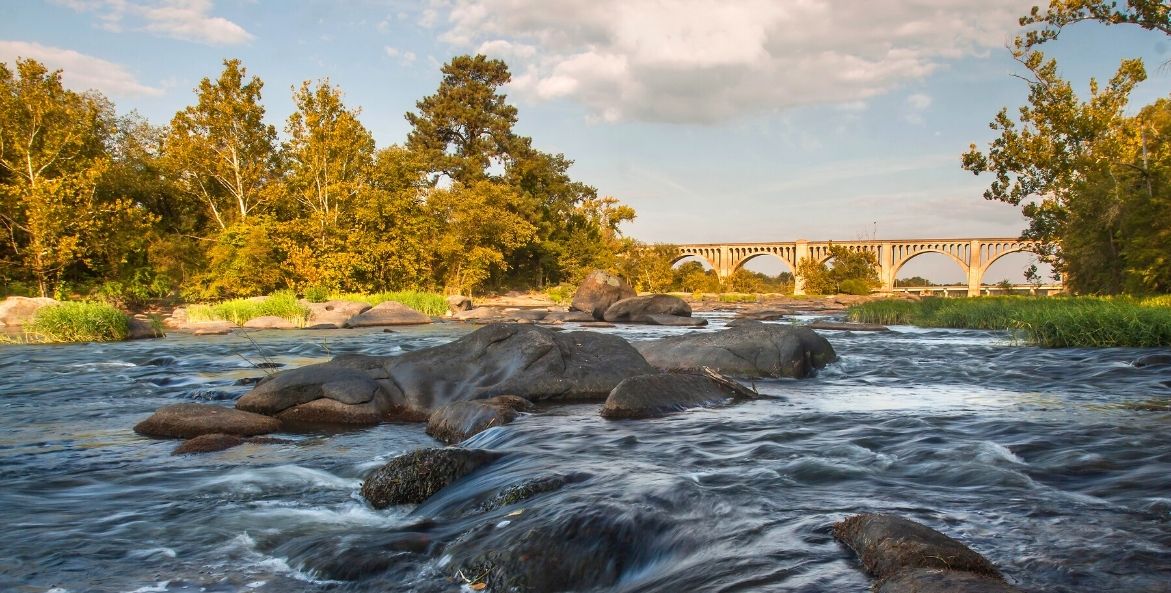CBF acts as a watchdog to urge the use of practices that heal our waterways, while being vigilant in opposing projects or proposals that would degrade water quality. We work at local, state, and federal levels for effective laws and regulations that will reduce pollution, restore vital natural systems like oyster reefs, forests, and wetlands, and encourage smart growth in our communities. However, we would not be able to do the work that we do without the support and voices of our Bay advocates. In short: We can’t save the Bay without people like you.
This year, thousands of our advocates took action and sent more than 37,000 letters to decisionmakers, urging them to enact policies that protect and restore our environment. While there were both wins and losses throughout the year, we wanted to wrap up 2021 by highlighting some of the major wins that were accomplished thanks to our dedicated Bay advocates.
1. Protecting the Most Important Fish in the Sea

Osprey depend on menhaden as a key element of their diet.
iStock
Atlantic menhaden, Brevoortia tyrannus, are small, nutrient-packed fish that are central to the Chesapeake Bay's ecosystem and support one of the largest commercial fisheries on the Atlantic coast. As a result of menhaden’s environmental and economic importance, management of the fishery is a political flashpoint across the region.
But thanks to years of advocacy by CBF, our partners, and our advocates, the Atlantic States Marine Fisheries Commission cut the coastwide menhaden harvest by 10 percent for the 2021 and 2022 fishing seasons. This lower harvest limit aims to leave enough menhaden in the water to help them fulfill their foundational role in the food chain both in the Chesapeake Bay and along the Atlantic Coast (they are a staple in the diet of striped bass, osprey, and countless other species).
2. Planting Five Million Trees in Maryland

Bob Garrigus
Maryland’s 442nd General Assembly session was a whirlwind and CBF, along with our partners, kicked it off with every effort to get a critical piece of legislation—the Climate Solutions Now Act—passed. Different versions of the bill passed both chambers with bipartisan support, but unfortunately, consensus could not be reached before the end of session, and it failed to pass. The good news is lawmakers listened to the thousands of CBF advocates who spoke up and ultimately were able to shift a key component of the Climate Solutions Now Act—planting five million trees by 2031—to another bill that did pass.
While the state will not have a new goal for reaching net-zero greenhouse gas emissions this year, officials will begin a decade-long effort to plant millions of trees that will sequester carbon and play an important role in efforts to fight climate change and restore the Chesapeake Bay.
3. Funding Clean Water Programs in Virginia

David Everette
In August, the Virginia General Assembly convened for a special session to decide how to allocate the $4.3 billion the state would receive from the federal American Rescue Plan Act. These federal dollars represented an unprecedented, once-in-a-lifetime opportunity for the state to invest in water quality improvement projects that would strengthen the state’s economy and environment while also protecting community health.
Hundreds of CBF advocates across the Commonwealth spoke up and the General Assembly ultimately appropriated an unprecedented level of funding toward modernizing wastewater treatment facilities, eliminating raw sewage overflows, and fixes for septic, straight pipe, and sewer systems. While additional investments in these and other programs are greatly needed, this was an important step forward in protecting the state’s waterways.
4. Limiting Greenhouse Gas Emissions in Pennsylvania

iStock
Last year, Pennsylvania started the process of joining the Regional Greenhouse Gas Initiative (RGGI), a cooperative effort among Mid-Atlantic and New England states to cap and reduce CO2 emissions from the power sector. But to join RGGI, the state must adopt CO2 emission regulations to reduce this powerful greenhouse gas that causes climate change. It’s worth noting: Pennsylvania currently ranks fifth in the nation in annual fossil-fuel fired CO2 emissions.
To support joining RGGI, the state proposed regulations to help reduce Pennsylvania’s CO2 emissions by creating a market-based CO2 budget trading program. When the regulations were opened up for public comment, advocates spoke up. CBF advocates submitted almost 2,000 comments, encouraging the Independent Regulatory Review Committee to adopt the proposed emissions regulations—and they did! Because of this, Pennsylvania is now one step closer to joining RGGI and combating climate change.
5. Historic Funding for the Chesapeake Bay Program

Debra Brown
After months of advocacy by CBF and thousands of our advocates, Congress passed the most significant piece of bipartisan funding legislation for the Bay. Supported by members of both political parties, this legislation increases funding for EPA’s Chesapeake Bay Program by $238 million over the next five years. This funding is in addition to the critical resources annually allocated for the Bay Program.
For decades, EPA’s Chesapeake Bay Program has been the glue that holds the federal-state Bay restoration partnership together. This investment is unprecedented and critical to achieving the commitments under the 2025 Chesapeake Clean Water Blueprint.
A year ago, we had no idea what to expect. But because of our advocates, we’re ending the year on a high note and looking forward to continuing the fight to save the Bay in 2022.
Want to know more about how you can get involved in advocating for the Bay? Check out our advocacy tools and resources for more information and then head to our Action Center to take action today.




